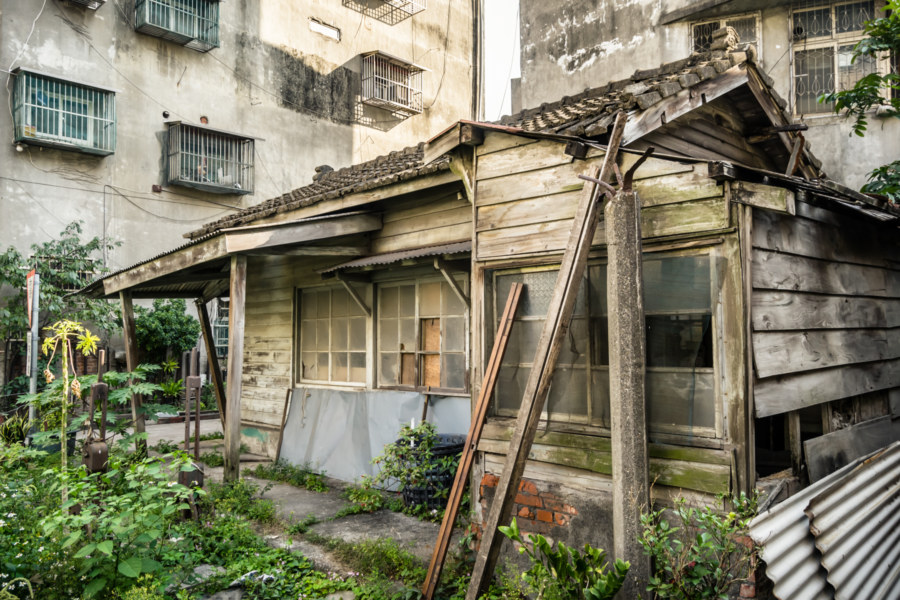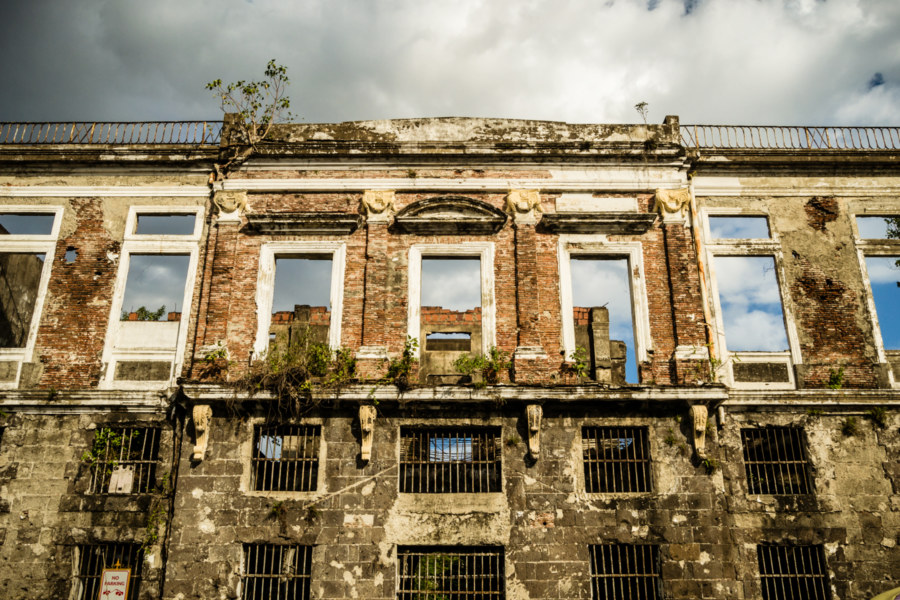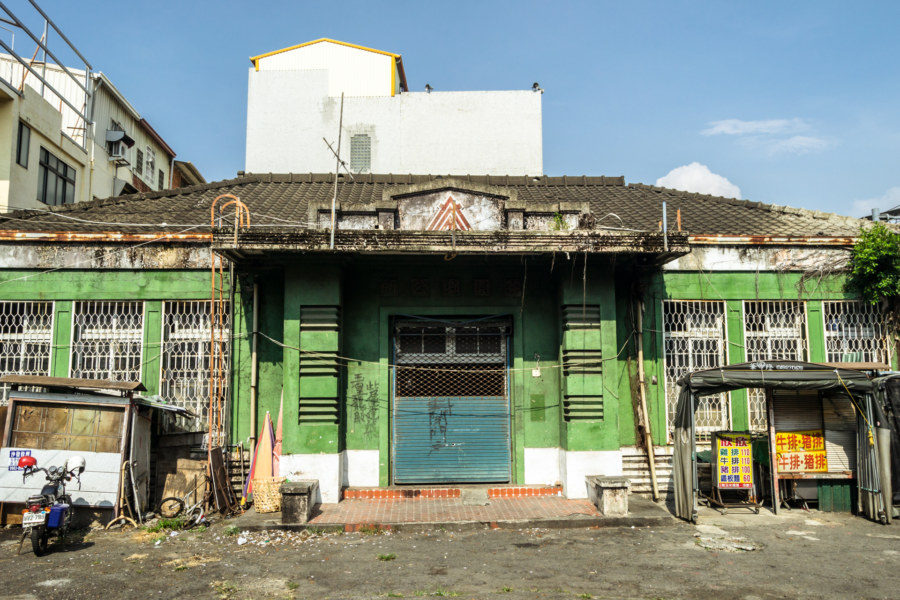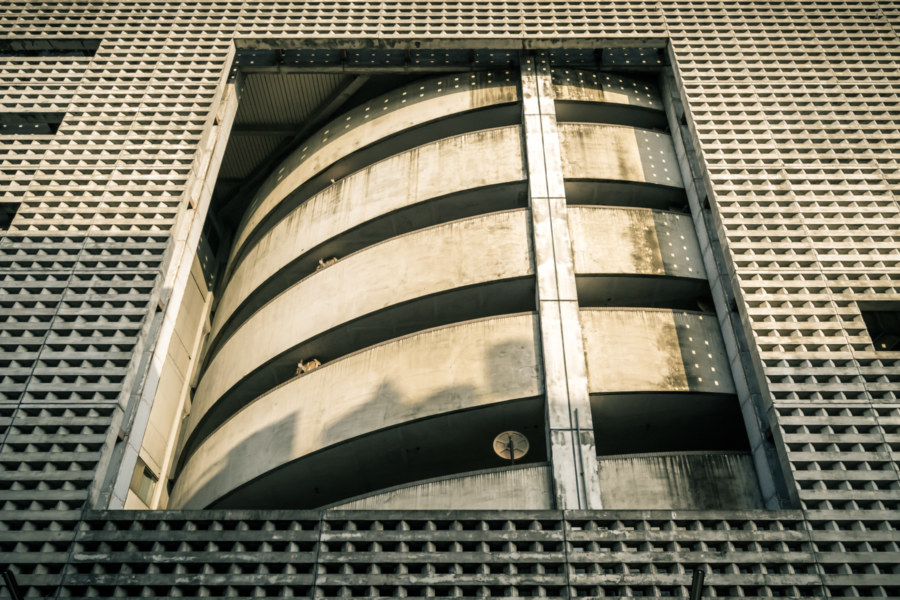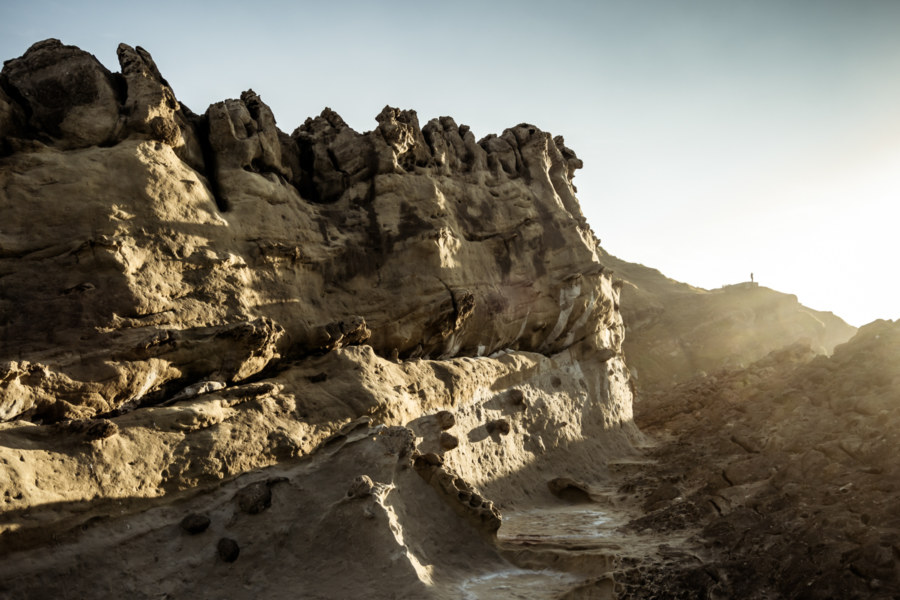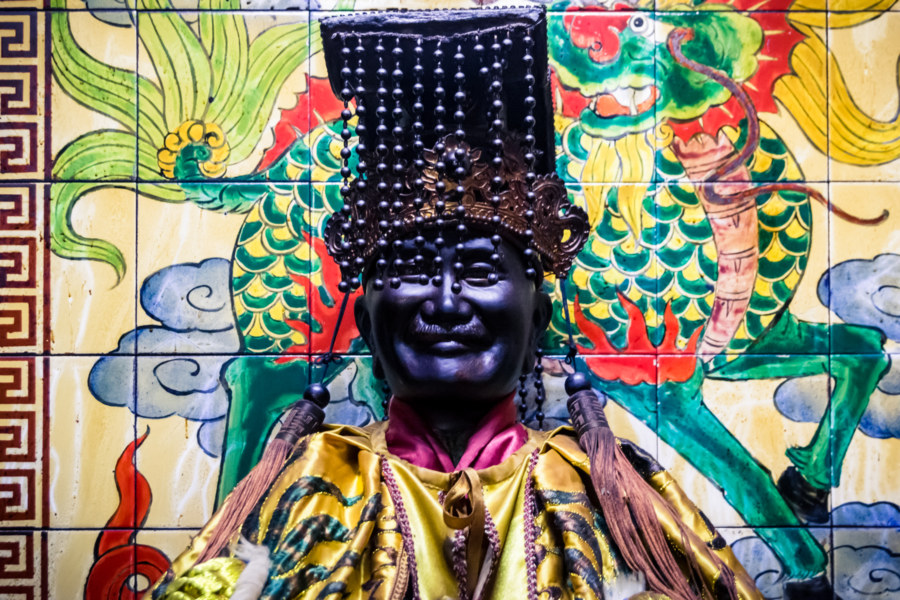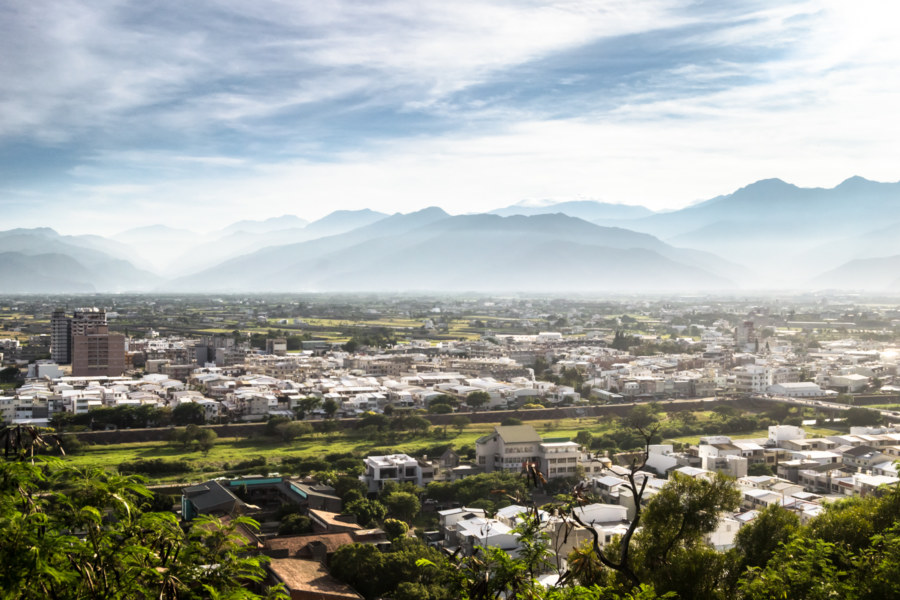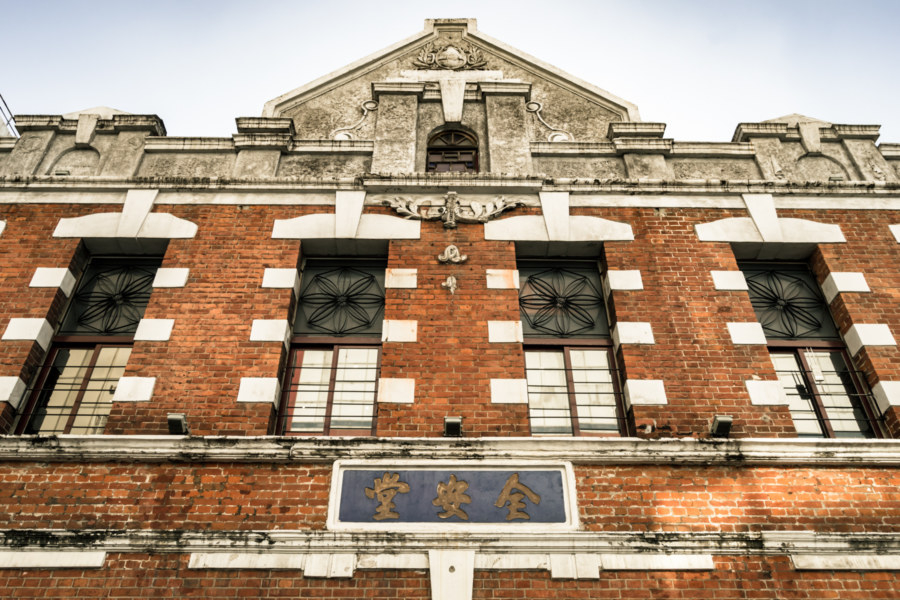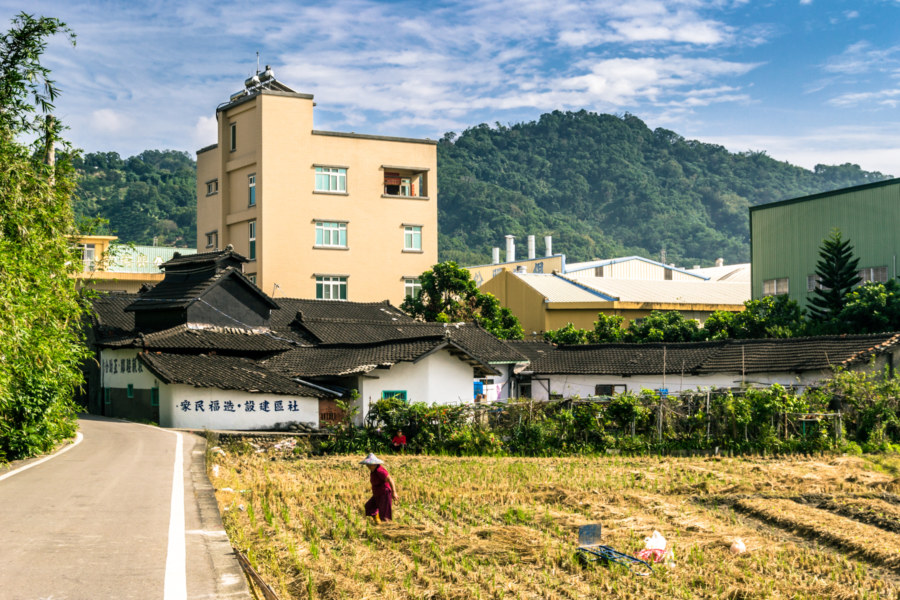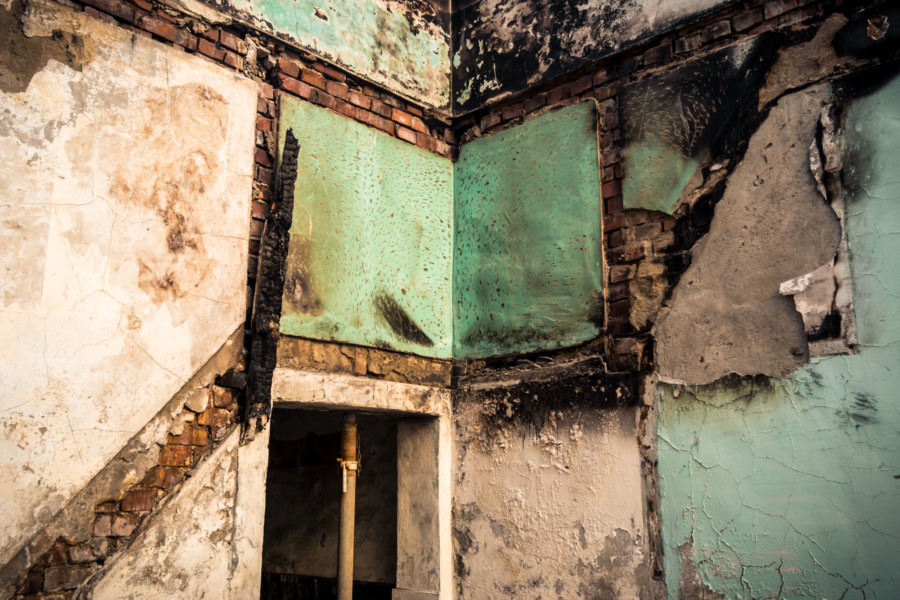South Yuanlin Station 南員林站 is an abandoned Japanese colonial era railway station located not far from the newly reopened Yuanlin Station 員林車站 in the heart of Yuanlin, a mid-sized city in central Changhua. It opened in 1933 as a small stop on the now-derelict Yuanlin Line 員林線 of the Taiwan Sugar Railways 臺灣糖業鐵路, which ran due west across the Changhua Plain 彰化平原 for approximately 9 kilometers to the Xihu Sugar Factory 溪湖糖廠 in Xihu. Apart from facilitating the transport of sugarcane and other cargo this old wooden station also provided passenger service until it was abolished sometime around 1976.
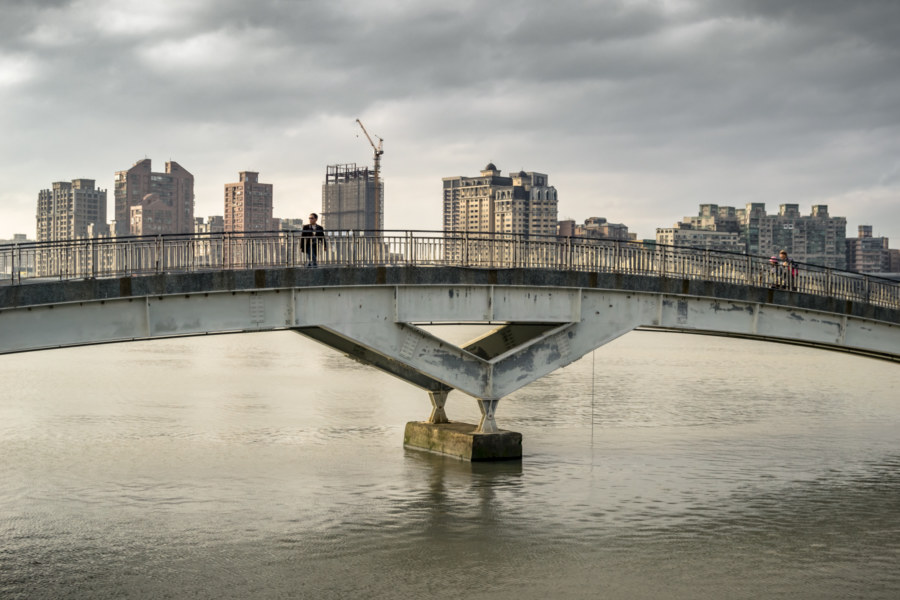
Exploring the urban condition: the buildings that tower over all, the rhythm of the streets, and the fleeting moments of humanity in the midst of the concrete jungle. See also: urbex.
Subterms
Adjacent Terms
The Ruins of the Aduana Building
The Aduana Building, also known as the Intendencia, is located just outside the walls of Intramuros, the historic center of Spanish colonial Manila. Originally built as a customs house in the 1820s, it has undergone several cycles of destruction and renewal starting in 1863, when the building was almost completely destroyed by the same strong earthquake that leveled much of the old city. Rebuilt in the mid-1870s, it served various government functions—office of the National Archives, first home of the Philippines Senate, and again the Bureau of Customs—before it was ravaged during the initial and final bombing campaigns of World War II. After reconstruction it again served as the offices of different government agencies before it was finally abandoned following a devastating fire in 1979. Restoration plans have been floated since the 1990s but as of late 2015, when I wandered by, the Aduana Building remains in ruin.
Fenyuan Town Hall 芬園庄役場
Fenyuan Town Hall (芬園庄役場) is another example of neglected Japanese colonial era architecture in Taiwan. Built in 1935, this modest building was the administrative center of the village of Fenyuan, located on the eastern edge of Changhua back when it was part of Taichū Prefecture (臺中州). It survived the war and remained in use until 1994 when a newer town hall was built down the street. Art Deco flourishes and the rust-colored emblem over the entrance give Fenyuan’s old town hall a distinctive look. Nowadays it is derelict—but it seems likely that it will be restored and opened to the public some day.
Brutalist Parkade
Cǎoxiédūn Public Parkade 草鞋墩公有立體停車場 is an intimidating structure looming over one of the main commercial shopping streets in Caotun, Taiwan. I was there in search of an abandoned theater but was immediately impressed with the strikingly brutalist design of this multi-storey car park. It is merely a place to park so there’s little more to say, though it would seem that it was recently derelict. Probably the only other tidbit of information worth conveying is that “Caoxiedun” refers to the original name of the town. You can be sure the first settlers never imagined this monument to honest architecture standing in their newly sown fields.…
Postcards From Badouzi 八斗子明信片
Near the end of my first summer in Taiwan I visited Bādǒuzi (八斗子), a rocky headland, coastal park, and major fishing port at the far eastern edge of Keelung. I went there on impulse, not knowing what to expect, just to see what was out there. Google Maps and Taiwan’s excellent public transit system make random explorations like this almost effortless: pick a point of interest and follow the directions—the digital equivalent of throwing a dart at a map. This post features a selection of retouched photos from this expedition alongside the sort of explanatory text I wouldn’t have been able to write back in 2013. Fair warning for arachnophobes: this post contains several gratuitous photos of giant spiders and other creepy crawlies!
Tamsui Kuixing Temple 淡水魁星宮
Kuíxīng Temple 魁星宮 in Tamsui is nominally dedicated to the eponymous Kuíxīng 魁星, god of examinations and one of the Five Wénchāng 五文昌, a group of deities representative of classical Chinese culture. He typically takes the form of a man balanced on one foot with a writing brush in one hand, his body twisted in a pose suggestive of the strokes of Chinese calligraphy. But you didn’t come here to read about Kuixing—this temple is notable for being one of only a handful of sites in Taiwan venerating Chiang Kai-shek 蔣中正, president of the Republic of China until his death in 1975, as a god. For a time it was informally known as the Tamsui CKS Temple 淡水蔣中正廟.
Southern Taiwan Ride 2015: Taitung City
Taitung City, the administrative capital of Taitung, was my final destination on a multi-day bicycle tour around southern Taiwan in the summer of 2015. Previously I shared words and photos from every day on the road so this post will act as something of an epilogue. Start at the beginning or read the last chapter to get up to speed—or treat this as a singular post about some of what I saw in an extra day of exploration around the most remote major city on the Taiwanese mainland.
Quan’an Hall 全安堂
Quán’ān Hall 全安堂 is a century-old building on Taiwan Boulevard 臺灣大道 not far from the old train station in Taichung. Built in 1909 with red brick, reinforced concrete, and a Neo-Baroque style commonly attributed to Japanese architect Tatsuno Kingo 辰野金吾 (中文), it was a pharmacy for many decades, and more recently a bakery. A few years ago it was rebranded as the Taiwan Sun Cake Museum 台灣太陽餅博物館, which now operates a gift store on the ground floor and, beneath the exposed wooden beams of the restored rooftop on the second level, a cafe, event space, and interactive museum.
Liancun Tobacco Barn 鎌村菸樓
Liáncūn Tobacco Barn 鎌村菸樓 is a historic building on the agrarian outskirts of Fengyuan, Taichung, and one of the last of its kind. Back in the tobacco industry heyday of the 1950s there were more than 100 tobacco barns in this small agricultural community. Almost all the others have been torn down or fallen into grave disrepair over the years but this one remains in surprisingly good condition, a testament to the upkeep of the owners, who still live inside. I haven’t had any luck sourcing credible historic information about this place—it isn’t an officially designated heritage property nor a tourist attraction—but I’d hazard a guess that it is at least 70 years old. I would have asked the old lady in the courtyard but she didn’t seem all that interested in having a chat—though she warmly granted permission to shoot these photographs when asked.
An Empty Shell on Dayong Street 大勇街屋
The south side of central Taichung is undergoing massive changes with the opening of the new Taichung Station. Formerly one of the most rundown parts of urban Taiwan, it is now the front of the station, and many old and decrepit buildings like this house on Dàyǒng Street 大勇街 are being torn down to make way for lucrative new developments. It is a minor ruin, one for which I have uncovered no specific history, although a little sleuthing around on Google Street View indicates the building was still intact in February 2015 and boasted a simple signboard for a tea shop: 茶點複合式冷飲. Judging by the construction style I would guess this place dates back to the 1960s, give or take a decade. Gathered here are several photos shared more for their aesthetic appeal than intrinsic historic value.
